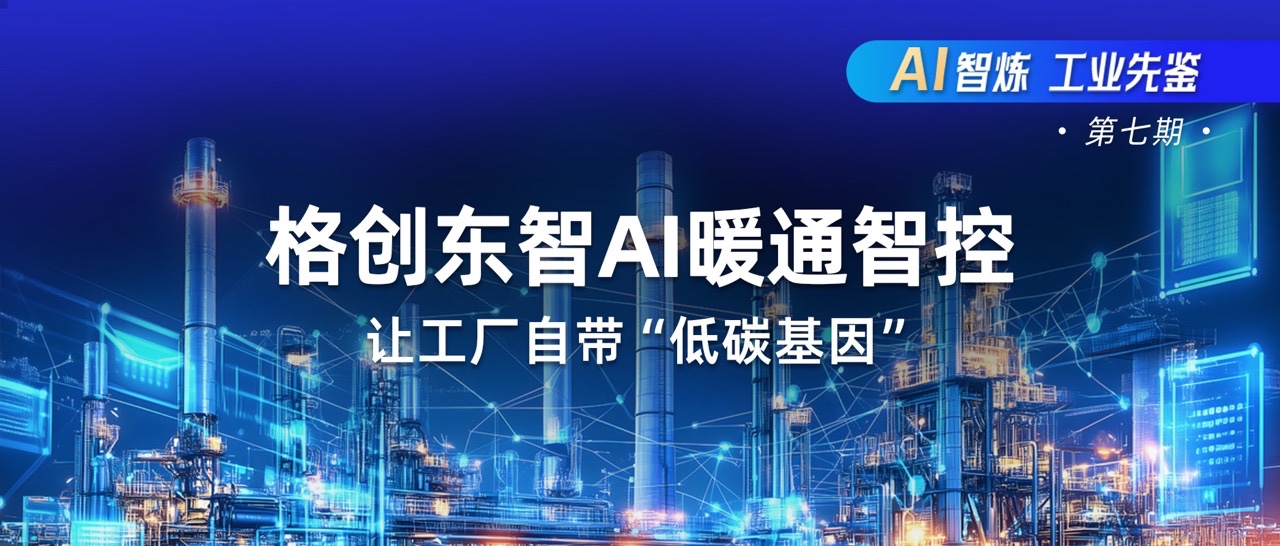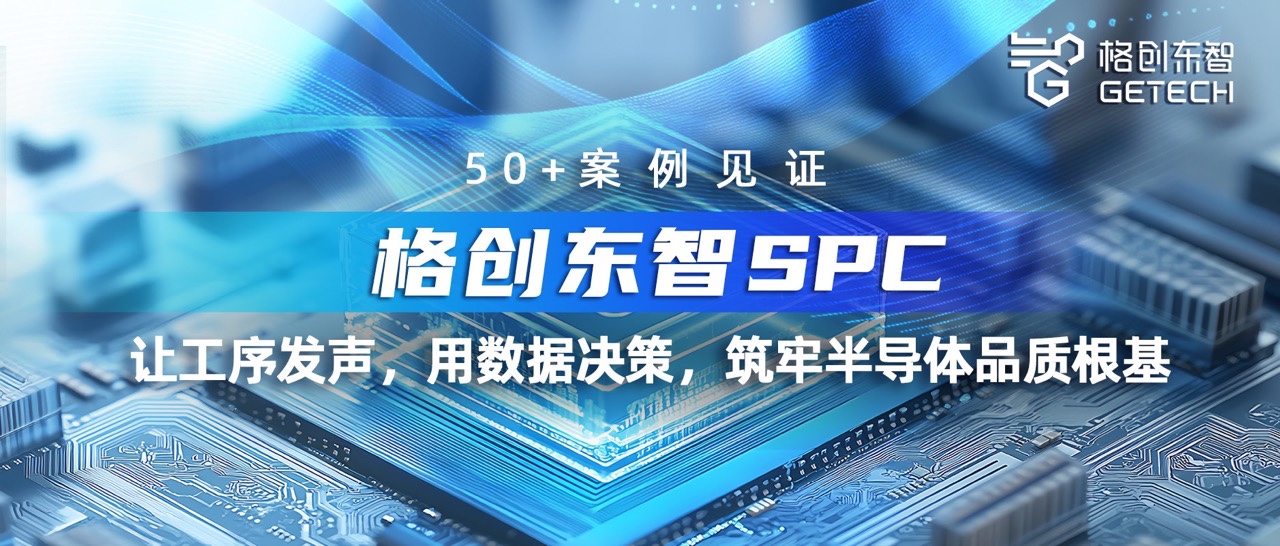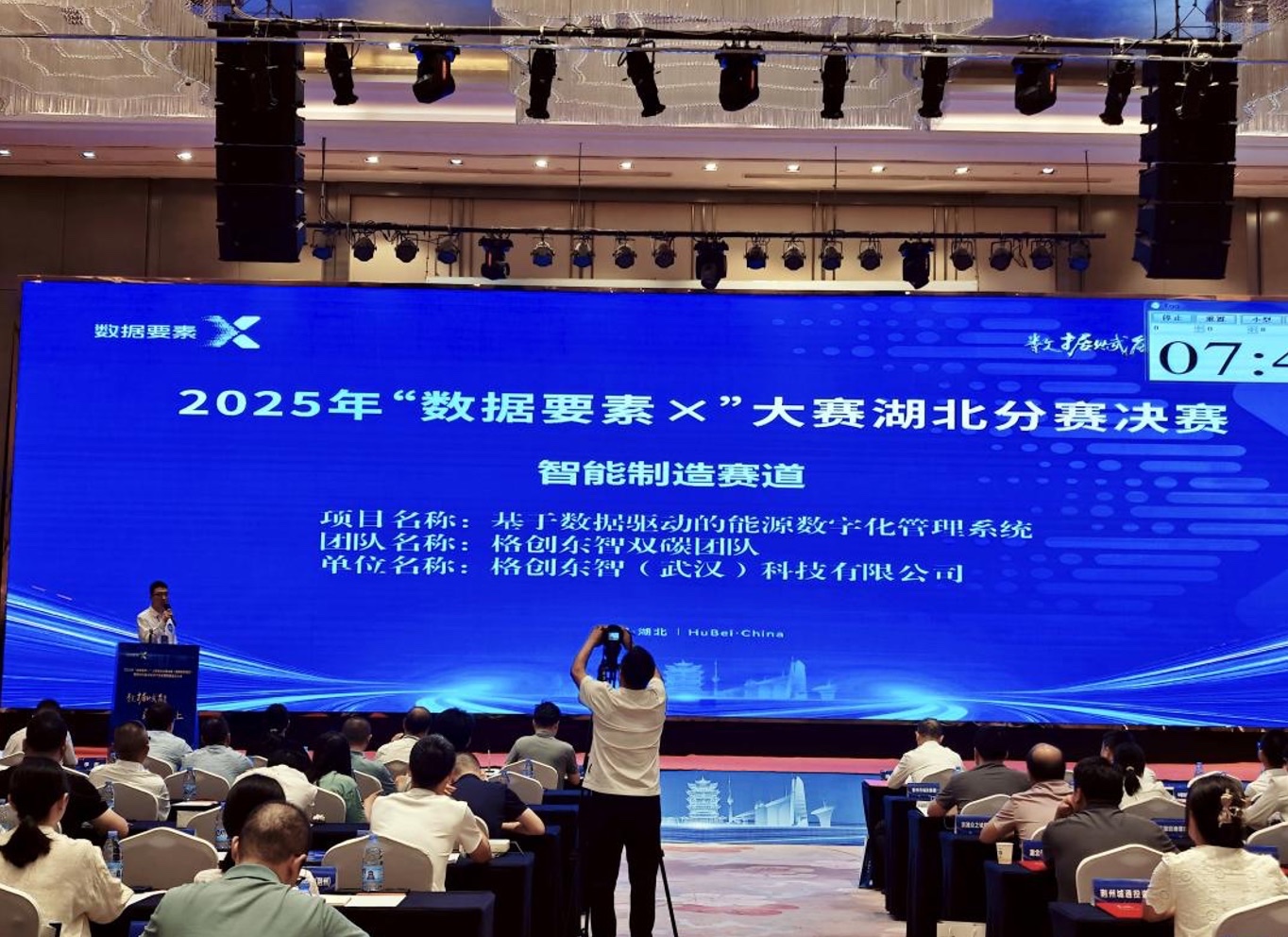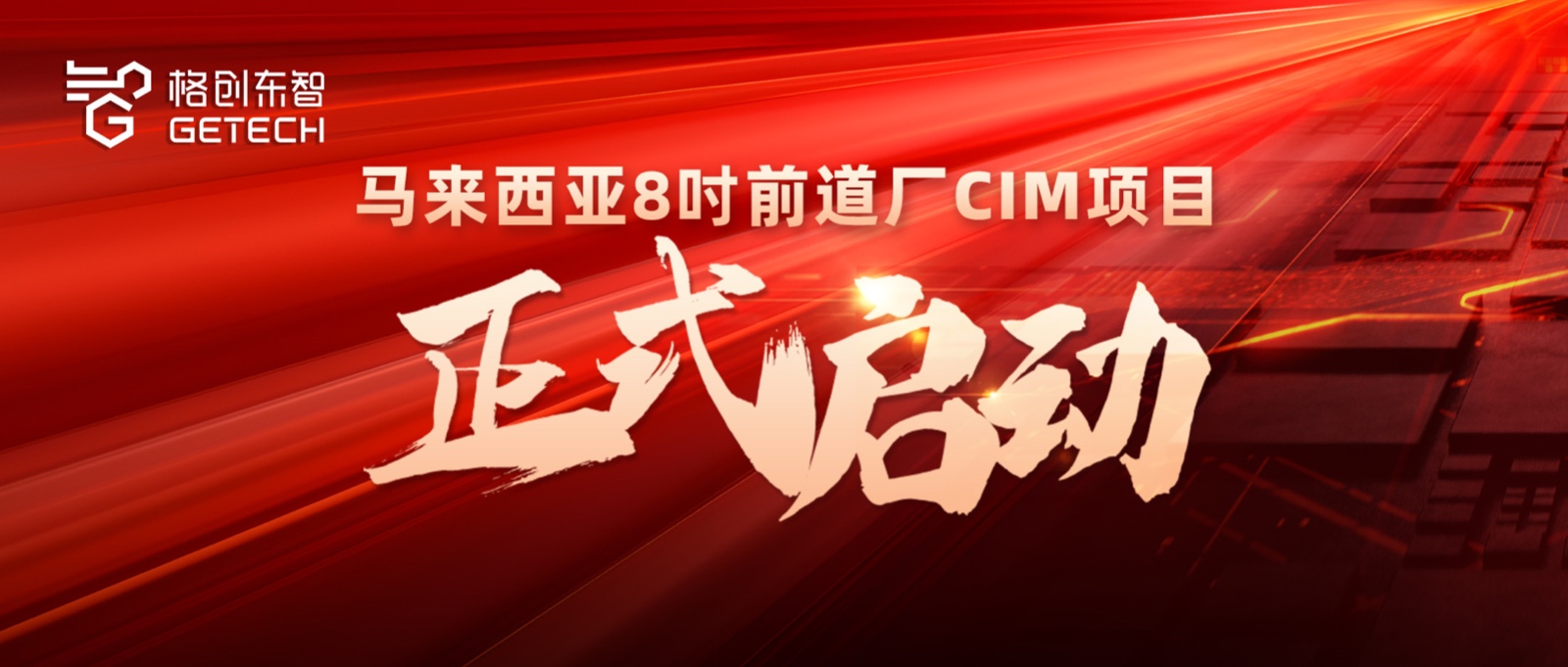As the digital transformation of manufacturing deepens, the 'Industrial Internet' is shedding its lightweight shell and revealing its heavy industrial side. As a product of the deep integration of a new generation of information and communication technology with manufacturing, the essence of the Industrial Internet is to build new production models and organizational forms by comprehensively connecting people, machines, objects, and systems, achieving cost reduction and efficiency improvement.
The diversity and complexity of industrial scenarios have long made the empowerment model of Industrial Internet platform companies project-based, a practice that is customized and delivery-heavy, making it difficult to form a universal service system. A major challenge for Industrial Internet platform companies is how to support manufacturing in completing its transformation and upgrading while extracting reusable models to bring new efficiency value to this grand systemic change.
In 2018, Gechuang East Intelligence was officially established. As an Industrial Internet platform company strategically incubated by TCL Group, Gechuang East Intelligence integrates cutting-edge technology with advanced manufacturing experience to provide Industrial Internet solutions for industrial sites. Adhering to a 'platform + software' development positioning, Gechuang East Intelligence continues to build a universal, standardized platform foundation—the East Intelligence Industrial Application Smart Platform—while deepening vertical industries. Currently, Gechuang has accumulated nearly 30,000 industrial models and over 10,000 industrial apps, serving 22 industries including semiconductors, new energy, 3C electronics, petroleum and petrochemicals, aerospace, and automotive. On May 5, Gechuang East Intelligence was selected by the Ministry of Industry and Information Technology for the '2022 New Cross-Industry Cross-Domain Industrial Internet Platform' list, making the East Intelligence Platform the first national dual-cross platform originating from semiconductor manufacturing.
In the view of Yunfeng Capital, with profound changes in the external environment, digital transformation has become a 'mandatory course' for manufacturing companies. In this systemic change, Industrial Internet platform companies with deep industrial expertise are needed to balance the complexity of industrial scenarios with the leading edge of innovative technology, exploring new paths of high-quality and efficient development together with manufacturing companies.
This episode of 'Yunfeng Talk' invites He Jun, CEO of Gechuang East Intelligence. In this dialogue between Yunfeng Capital and He Jun, we explore the challenges and core drivers of digital transformation in manufacturing, and how, as an Industrial Internet platform company, Gechuang extends from product customization to generalization.
Below is the dialogue, enjoy:
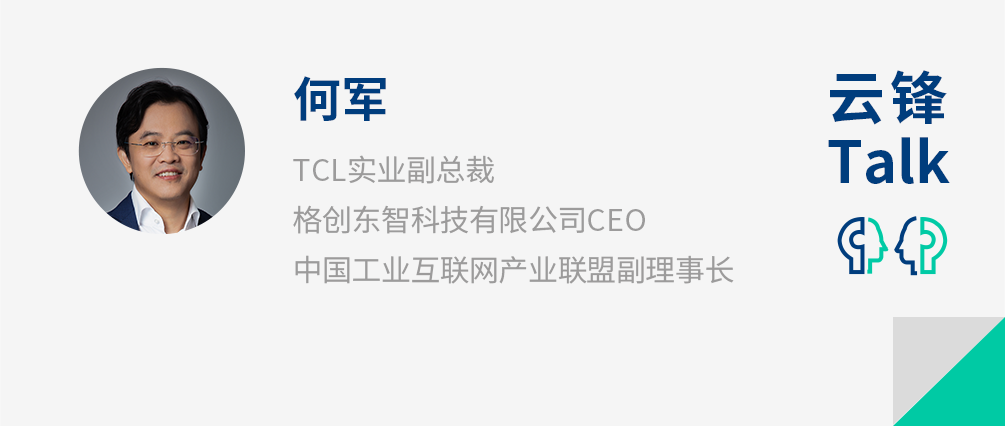

Yunfeng: The transformation and upgrading of manufacturing is an inevitable trend. What is Gechuang East Intelligence's understanding of the Industrial Internet?
Yunfeng: How do you understand that the premise of digital transformation in manufacturing is to follow the characteristics of industrial scenarios?
He Jun: First, core industrial software is highly customized, varying greatly even among different companies in the same industry. Developing industrial software requires considering production processes, manufacturing procedures, and techniques, which cannot be done solely by a technical team. Without an understanding of industry, it is difficult to achieve subsequent development and operation of universal industrial apps.
Second, digital transformation must fully consider the need for production stability and not just focus on technological advancement. Some manufacturing companies require software to be successfully deployed in one go, which means the implementation experience of Industrial Internet platform companies is crucial.
Yunfeng: The development of high-end industrial software has long faced challenges. What are the root causes?
He Jun: First, it's a foundation issue. For a long time, China's manufacturing industry has been dominated by low-end, discrete formats like OEM processing, which are difficult to drive innovation. Without the right soil, good seedlings cannot grow.
Second, there is a cognitive misalignment. In the past, we focused more on catching up in production technology, such as improving processes, manufacturing procedures, and equipment levels, but rarely devoted effort to industrial software R&D.
Third, who is the real main body of industrial software innovation? In Europe and the U.S., truly leading industrial software companies are incubated by manufacturing companies. Dassault was nurtured by the French military industry, and Siemens had manufacturing before it had industrial software. But in China, people seem to think that industrial software innovation should be led by IT or internet companies, which is actually a mistaken concept.
Yunfeng: What lessons can be learned from the development of foreign industrial software?
He Jun: First, we must reach a consensus in concept, recognizing that the development of industrial software and Industrial Internet platforms must be led by platform companies incubated from manufacturing.
Second, we need to cultivate platform-based, comprehensive software enterprise groups rather than encouraging a hundred flowers to bloom. The R&D investment for industrial software is huge, and it requires rich data and case accumulation. It is difficult for single software or innovative companies to achieve breakthroughs. The startup model from 0 to 1 is definitely not mainstream in the Industrial Internet field.
Third, mechanisms and talent must be prioritized. Although leading foreign Industrial Internet platform companies are nurtured by manufacturing, they develop relatively independently. The same should be true in China, with market-oriented operational mechanisms.
Yunfeng: The Industrial Internet is a vast industrial ecosystem, including platform companies born from manufacturing, technology platforms built by internet companies, traditional enterprise service companies, and emerging startups. What roles do these four types of companies play?
He Jun: Everyone should adopt a complementary cooperative attitude. There is a concept of 'main and auxiliary.' The 'main' should be platform companies like Gechuang, incubated by manufacturing, responsible for defining standards, transforming factory architectures, and top-level design, becoming the main force driving change.
The second type is companies born from pure software companies. They can extend into areas they are good at, such as companies starting from ERP management software continuing into finance and supply chain sides.
The third type is internet platform companies. Their strength lies in sinking down to the IaaS layer (Infrastructure as a Service) and cloud platforms. In these dimensions, we also cooperate with Alibaba and Tencent.
The fourth type is innovative startups from 0 to 1. They can find their expertise in certain areas on Industrial Internet platforms. Gechuang is very willing to open our database and component library, cooperating with innovative companies in different fields, allowing them to use our resources for deep innovation.

Yunfeng: Compared to other Industrial Internet platforms incubated by manufacturing companies, what unique value does Gechuang East Intelligence provide?
He Jun: Gechuang East Intelligence is an Industrial Internet platform company incubated from a semiconductor manufacturing company in China. The semiconductor industry has 'three highs': high-value, high-precision, and high-frequency equipment, with huge data throughput and very high collection frequency. Therefore, the data we extract has 'two multiples': multi-parameter and multi-type. Because of the characteristics of the semiconductor industry we serve, the stability of our software platform and the richness of our model algorithms are significantly different from other companies.
Yunfeng: Gechuang proposes an R&D direction 'oriented to the production site.' How do you understand this positioning?
He Jun: The production site has two meanings: First, we take engineers and production managers at industrial sites as our service objects, which determines our product thinking. The tools and platforms provided by Gechuang integrate low-code or even no-code technology, allowing engineers without IT knowledge to use them independently, greatly reducing the barrier to use.
Second, we want to solve the problems engineers face daily in factories, including factory human efficiency, equipment processing rates—all factory-related indicators are our concern.
Yunfeng: What role do frontline workers play in manufacturing transformation?
He Jun: The driving force of manufacturing innovation must come from frontline workers because they are the ones who know the factory best. Only by stimulating their innovation and solving their problems can we solve the factory's problems.
Second, the hardest part of digital transformation in manufacturing is solving on-site industrial problems. Sometimes it might just be a yield issue, but the underlying causes can be many, possibly related to equipment, processes, or on-site staff management. To solve factory problems, end-to-end, comprehensive, and rich data is essential.

Yunfeng: What innovative practices does Gechuang have around digital transformation at the production site?
He Jun: We provide self-service analysis tools for workers. In the past, manufacturing experience was in the minds of master workers, who relied on experience to solve problems. But now we provide multi-factor analysis (MFA) tools, allowing engineers to call models through simple drag-and-drop to complete data analysis, find the root cause of problems, and solve them more intelligently.
Our product philosophy is to turn frontline workers into 'industrial geeks,' while also沉淀 their know-how, iterating more accurate models through machine learning.
Yunfeng: How do you motivate engineers to change long-standing work habits and become the main force of factory evolution?
He Jun: Digital transformation in factories is closely related to production relations and organizational structure. Any lag in each link may prevent the productivity of tools from being released. First, we must clarify who uses the production tools—the people responsible for operation and maintenance must understand the production process (frontline workers). Second, improve the in-house capability of manufacturing. When new platforms and software emerge, there must be people in the factory who can digest these software and promote them. Third, new production tools require changes in previous work methods and processes, which requires a lot of training.
Therefore, when serving enterprises, Gechuang positions itself as a 'digital consultant.' After software deployment, we provide accompaniment for six months to a year to help enterprises make good use of advanced production tools and jointly implement innovative system architectures.
Yunfeng: Self-developed industrial software is another important proposition in promoting manufacturing transformation. What progress has Gechuang made?
He Jun: Over the past four years, we have comprehensively梳理 the manufacturing processes and factory operations of the semiconductor industry,沉淀 a full-factory computer integrated manufacturing (CIM) solution. Taking a semiconductor company we serve as an example, nearly 90% of the systems used to adopt foreign industrial software. Today, that number has flipped, with 90% being self-developed products by Gechuang. Additionally, in semiconductor chips, lithium battery manufacturing, and the photovoltaic industry, we have achieved a certain proportion of domestic industrial software, while continuously increasing this proportion.
We plan to invest 2 billion yuan in the next five years to continue breaking through core key technologies and achieving domestic industrial software. First, we hope to achieve complete independent control of core industrial software. Second, we hope to use Gechuang's Industrial Internet middle platform to reconstruct the operating system of high-end factories.
Yunfeng: Gechuang recently released a carbon management system (CMS). Under what circumstances was this product developed?
He Jun: Gechuang had an energy management product (EMS) from the very beginning because the semiconductor companies we initially served, like TCL华星, were high-energy-consuming enterprises that needed to manage the energy consumption of industrial equipment. Over the past three years, we started promoting this product to enterprises and industrial parks with high energy consumption.
In 2021, when the country began calling for dual carbon, we敏锐 realized its importance. Relying on the original team, we developed the carbon management system (CMS) based on EMS, building a one-stop low-carbon digital platform for enterprises and parks.

Yunfeng: What are the keywords for Gechuang East Intelligence in 2022?
He Jun: First, 'deepening two vertical industrial chains'—in the泛 semiconductor and new energy industrial chains, the goal is to become the number one in business scale among domestic Industrial Internet platform companies. Second, 'dual carbon'—forming competitive products in the dual carbon field and becoming a leading service provider. Third, 'productization'—in the past, we did many customized projects. This year, we will further separate products and R&D to accelerate product提炼.
Yunfeng: From initially focusing on the semiconductor industry to later expanding into new energy, 3C, and other fields, what insights has Gechuang gained in industry expansion?
He Jun: Gechuang East Intelligence has served clients in 22 different industries, from semiconductors, new energy, and 3C electronics to aerospace and petrochemicals. In terms of industry expansion, we have several insights:
First, focus on the accumulation of models and libraries. The core of platform and software expansion lies in the accumulation of middle platform resources. The more accumulated, the more reusable things there are.
Second, consciously accumulate industrial software that can be used across industries. We categorize software into different types: one is platform software, such as IoT platforms and big data middle platforms; the second is software not strongly bound to processes and production flows, such as energy management (EMS) and supply chain management (SRM). For this type of software, we require rapid productization with minimal customization.
Third, in organizational form, achieve separation between delivery teams and productization teams. Some industrial software companies have long been delivery-oriented, making it difficult to realize the value of productization teams. Therefore, Gechuang separated delivery and product organizations early on to ensure productization and cross-industry development.

Yunfeng: The diversity and complexity of industrial scenarios determine that the value of industrial software is long reflected in personalized services. Are personalization and standardization irreconcilable contradictions?
He Jun: Industrial Internet platform software确实 has this issue, especially when working on medium to large enterprise projects, where the delivery method is inevitably project-based. Frankly, we have gone through some exploration. When we first entered the Industrial Internet field, we also believed that good software companies' products were mainly SaaS-based and subscription-based. But as our understanding of the industry deepened, we found that first sinking into the development and implementation of core industrial software and gaining a deep understanding of customers provides the opportunity to create more valuable products around their business. This cannot be leapfrogged.
Yunfeng: In building an Industrial Internet platform company, how do you balance personalized delivery with standardization?
He Jun: The core issue is how to reduce the proportion of personalized project delivery. Here are some thoughts:
First, accelerate delivery cycles and improve unit efficiency by accumulating rich models and libraries. For example, for universal projects like IT platforms, the delivery cycle for large manufacturing enterprises was six months four years ago, but now it can be shortened to 2-3 weeks.
Second, have different software product portfolios. After delivering heavier core software, we cross-recommend SaaS-type subscription software to clients, making it easier for them to adopt because there are integration interfaces between the software. But without the premise of building core industrial software, it is difficult to recommend lightweight software targeted.
Yunfeng: Some believe that the subscription-based SaaS model is the future main empowerment model. In your view, can the subscription model better serve manufacturing enterprises?
He Jun: I believe the proportion of subscription software will significantly increase in the coming years because once factories are built, enterprise investment will inevitably shift to new technologies, using new products to achieve higher-level analysis. But if you want to replace core industrial software with SaaS, this will not become mainstream in the short term. The core reason is that for the stage China's manufacturing is in, this product form does not have much value.
Think about it, why would enterprises adopt SaaS? First, convenience; second, standardization; third, cost savings. But in manufacturing, it is rare to have download-and-use, pay-per-use scenarios.
But the tools Gechuang makes are always moving in this direction. For example, with the multi-factor analysis tool, engineers can buy an account and immediately call models for analysis. This is our innovation point. However, currently, most industrial software cannot reach this level, so this value point is lost.

